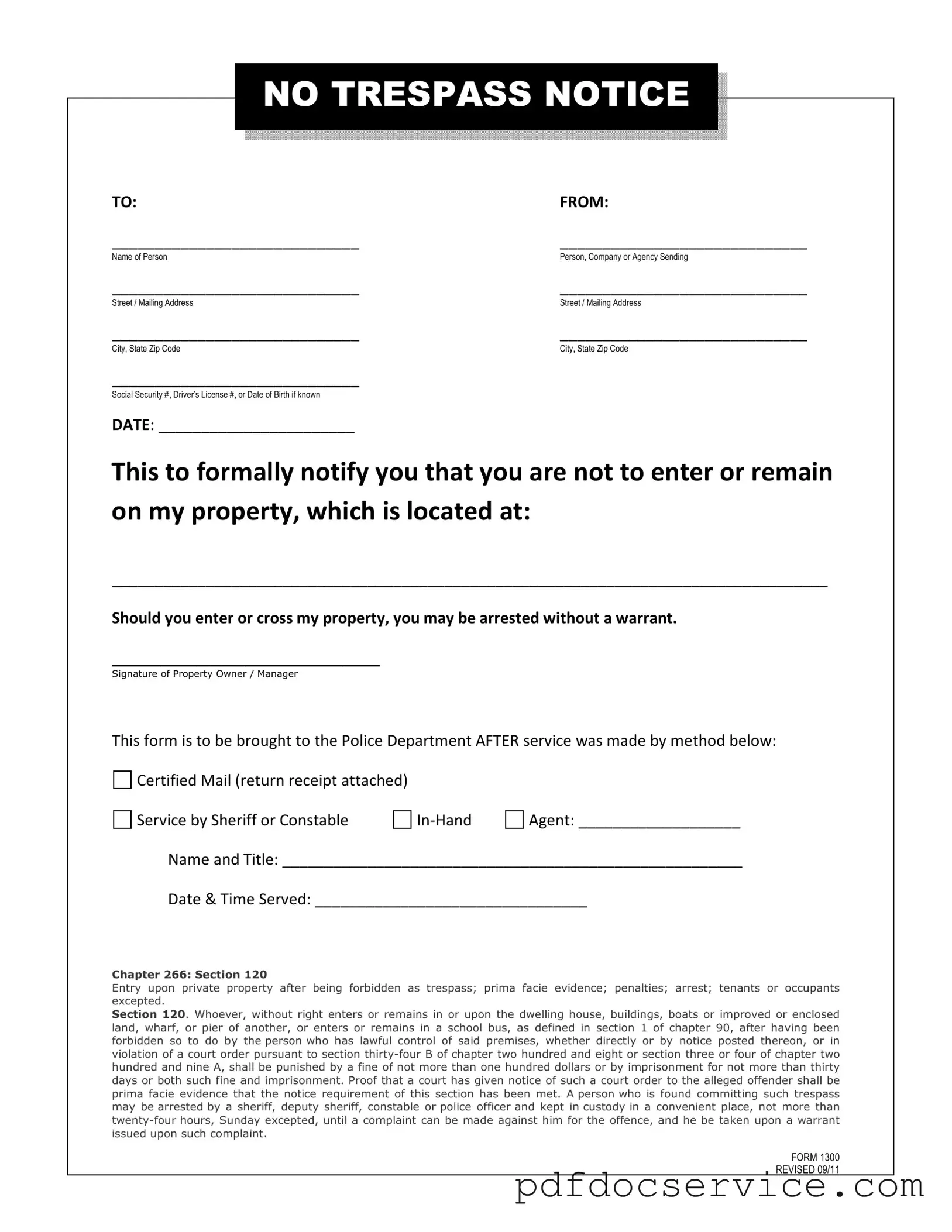Fill Your No Trespassing Letter Form
The No Trespassing Letter form serves as a formal notification to individuals that they are prohibited from entering or remaining on a specified property. This document outlines the necessary steps for enforcement, including potential legal consequences for violations. Proper completion and delivery of this form are crucial for property owners seeking to protect their rights and ensure compliance.
Open No Trespassing Letter Editor
